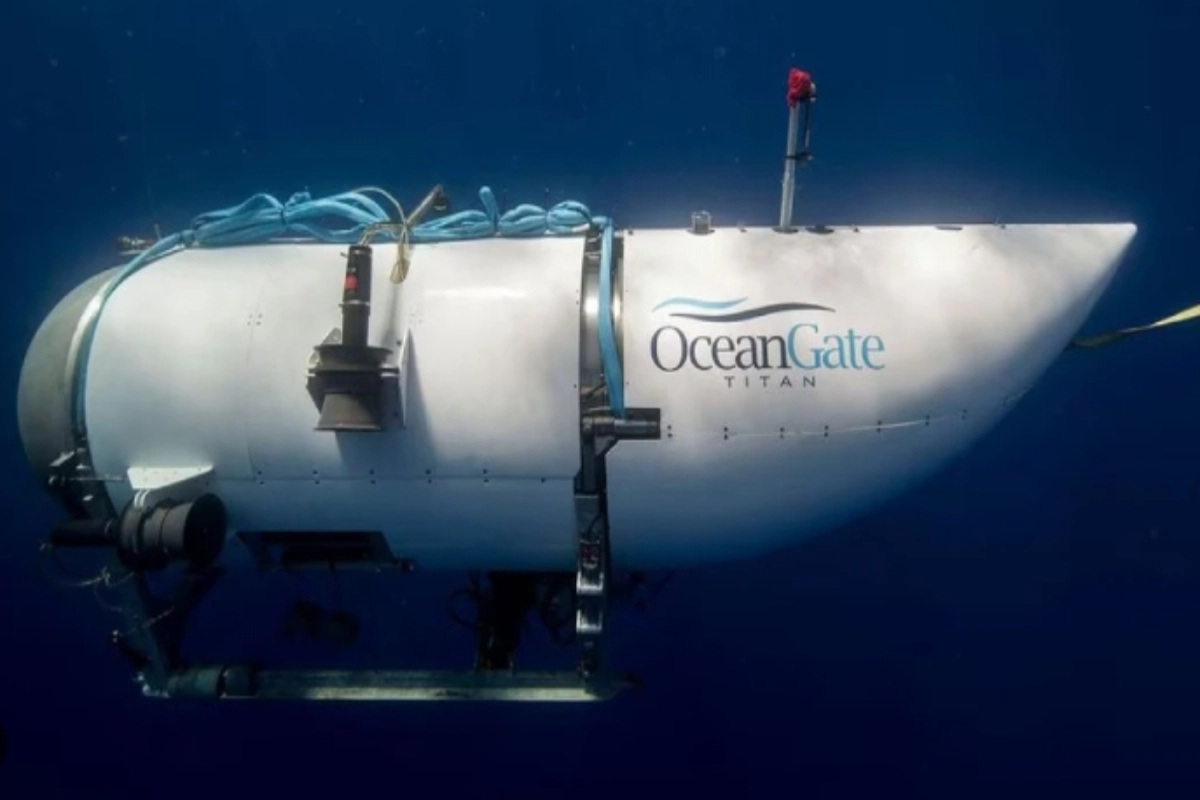Titan submersible: The U.S. Coast Guard announced on Thursday that a deep-sea submersible that was lost after a “catastrophic implosion” that killed everyone on board was located in pieces. The search for the submersible had taken place internationally for five days.
Robotic Diving Vehicle Unveils Clues to Titan’s Fate
U.S. Coast Guard Rear Admiral John Mauger told reporters that on Thursday morning, a robotic diving vehicle sent out from a Canadian ship discovered a debris field from the submersible Titan on the seabed about 1,600 feet (488 metres) from the bow of the Titanic, 2 1/2 miles (4 km) beneath the surface, in a remote area of the North Atlantic. The Titan, a vessel owned and run by the American company OceanGate Expeditions, went missing on Sunday morning about an hour and a half into a dive that was supposed to take two hours to reach the world’s most famous shipwreck.
Titan’s Tail Cone and Pressure Hull Found in Catastrophic Implosion
The 22-foot (6.7-meter) Titan’s tail cone and two pieces of its pressure hull were among five significant pieces discovered in the Titan’s wreckage, according to Coast Guard officials. There was no indication of whether or not any human remains were found. According to Mauger, the debris field in this location “is consistent with a catastrophic implosion of the vehicle.” There were no survivors among the five men aboard the Titan, including Stockton Rush, the company’s founder and CEO, who was operating the Titan, according to a statement from OceanGate that was released before to the Coast Guard’s press conference. The other three were British nationals Shahzada Dawood, 48, and his 19-year-old son Suleman; British billionaire and explorer Hamish Harding; and French oceanographer and famous Titanic expert Paul-Henri Nargeolet, 77, who had visited the wreck numerous times. Rescue crews from many nations have spent days using ships and planes to scour thousands of square miles of the open sea for any trace of the Titan. The aftermath of a considerably worse maritime calamity that resulted from the wreck of a migrant vessel off the coast of Greece last week, which killed hundreds of people, was virtually ignored by the intense global media coverage of the hunt.
The Mysterious End of the Titan Submersible
When Titan met its end, according to Mauger, it was still too early to say. According to Mauger, the search operation used sonar buoys in the region for at than three days without being able to hear any of the loud, violent noises that would have been produced when the submersible collapsed. However, the Titan’s last transmission and the location of the debris field relative to the shipwreck seemed to indicate that the breakdown happened on Sunday near the end of its descent. Separately, the U.S. Navy admitted that its own acoustic data analysis had shown “an anomaly consistent with an implosion or explosion” close to the submersible’s position when its communications failed. The Journal reported that the sound was picked up by a top-secret technology intended to find enemy submarines, citing anonymous U.S. defence officials. James Cameron, who directed the Oscar-winning blockbuster “Titanic” and has personally travelled to the site in submersibles, claimed in a Reuters interview on Thursday that he was informed of the acoustic findings within a day and understood what it meant. “I sent emails to everybody I know and said we’ve lost some friends. The sub had imploded. It’s on the bottom in pieces right now. I sent that out Monday morning,” he said.
Must Read: Prime Minister Modi Urges American CEOs to Boost Investment in India
Recovery of Victims Uncertain in Wake of Titan’s Tragic End
It is unclear whether collecting the victims’ remains will be possible given the nature of the disaster and the harsh conditions at those depths, but robotic equipment on the seabed will continue to gather evidence, Mauger added. On Thursday, when the submersible’s estimated 96-hour air supply was supposed to run out assuming the Titan were still in tact, the hunt had grown more desperate. However, the countdown proved pointless. Near Cape Cod, Massachusetts, and 400 miles (640 km) south of St. John’s, Newfoundland, the RMS Titanic, which encountered an iceberg and sank during her maiden voyage in 1912, killing more than 1,500 people on board, is located. According to the company’s website, the submarine voyage to the wreck, which OceanGate has been doing since 2021, cost $250,000 per person. A symposium of submersible industry professionals in 2018 voiced concerns about Titan’s safety. Later that year, a lawsuit filed by OceanGate’s former head of marine operations raised similar concerns. Over 10,000 square kilometres of ocean were searched in detail. The search was extended on Thursday by the deployment of two specialised deep-sea robot vehicles, which complicated the job due to extreme pressure and total darkness.
Keep watching our YouTube Channel ‘DNP INDIA’. Also, please subscribe and follow us on FACEBOOK, INSTAGRAM, and TWITTER
